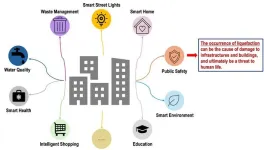Researchers from Florida Atlantic University’s Schmidt College of Medicine conducted a comprehensive study using data from the Youth Risk Behavior Survey between 2011 and 2021, which surveyed 88,183 adolescents in grades nine through 12. Researchers focused on the overall time trends in use of marijuana as well as variations by gender, race/ethnicity, and school grade. These data provide important insights into the changing landscape of marijuana use among American youth.
The study, published in the journal Pediatric Reports, reveals that one of the most striking results from the analysis is the significant decrease in the percentage of adolescents reporting current marijuana use. In 2011, 23.1% of adolescents indicated they were current users, but by 2021, this figure had dropped to 15.8%. Additionally, the percentage of adolescents trying marijuana for the first time before age 13 also saw a notable decline, from 8.1% in 2011 to 4.9% in 2021.
In 2021, marijuana use was most prevalent among 12th graders (22.4%), followed by 11th graders (18.7%), with lower usage rates in the earlier grades. From 2011 to 2021, all grades experienced a notable decline in current marijuana use, especially among ninth graders. While there was an overall downward trend over the years, there were slight increases in use in 2013 and again in 2019.
“While we observed an overall decline from 2011 to 2021 across all grades, older students consistently reported higher usage, particularly 12th graders. This suggests that as adolescents advance through high school, they may have greater access to marijuana, influenced by more developed peer networks and increased independence,” said Panagiota “Yiota” Kitsantas, Ph.D., corresponding author and professor and chair of the Department of Population Health and Social Medicine, FAU Schmidt College of Medicine. “This trend highlights the need for targeted interventions aimed at older adolescents, who are at a greater risk of regular marijuana use.”
One of the most significant findings of this study is the shift in trends by gender, with girls surpassing boys in reported marijuana use by 2021. In 2021, girls reported a higher prevalence of current marijuana use (17.8%) than boys (13.6%). This marks a significant change from 2011 when boys were more likely to use marijuana (25.9%) compared to girls (20.1%). The convergence of usage rates among genders highlights an evolving dynamic that could reflect broader societal changes in attitudes toward marijuana.
The researchers also found variations among Asian, Hispanic and white adolescents, who experienced some of the steepest declines in current use. In 2021, however, Black adolescents reported a notably higher percentage of current marijuana use at 20.5%, compared to their white (14.8%), Hispanic (16.7%), and Asian (5.1%) counterparts. This indicates a persistent racial disparity in marijuana use among adolescents that warrants further examination.
“In the U.S. the current landscape of marijuana legalization in adults adds a complex layer to the issues of adolescent marijuana use. As more states continue to legalize recreational marijuana, the accessibility and perceived normalcy of the drug may increase, particularly for adolescents who may view its legal status as an indication of safety or acceptability,” said Charles H. Hennekens, M.D., FACPM, co-author, the first Sir Richard Doll Professor of Medicine and Preventive Medicine in the departments of medicine and population health and social medicine, and senior academic advisor, FAU Schmidt College of Medicine. “Research suggests that marijuana legalization in adults can influence adolescent behavior through their perceptions of less risk as well as increased availability, both of which may impede efforts to reduce adolescent use.”
The authors emphasize the importance of interventions like parental communication, supervision and modeling, alongside schools offering effective health education and fostering a positive school climate, to sustain the decline in adolescent marijuana use.
Findings from the study highlight the need for ongoing monitoring and intervention strategies to address marijuana use among U.S. adolescents. By focusing on the specific needs of various demographic groups, including different grade levels, genders and racial/ethnic communities, public health initiatives can more effectively address the risks associated with adolescent marijuana use and foster healthier outcomes for future generations.
Regular or heavy marijuana use during adolescence can adversely affect cognitive development, leading to poor learning, working memory issues, and attention deficits, regardless of educational background or verbal intelligence. Adolescents who use marijuana are two to three-and-a-half times more likely to have lower grade point averages and face a fourfold increase in psychosis diagnoses in adulthood. Research shows that marijuana use disrupts brain function by reducing synaptic pruning, resulting in increased gray matter volume and decreased communication efficiency in higher-order brain areas.
Study co-authors are Jack Yang, first author and a second-year FAU medical student; Maria C. Mejia, M.D., a professor; and Lea Sacca, Ph.D., an assistant professor, both within the Department of Population Health and Social Medicine, FAU Schmidt College of Medicine.
- FAU -
About the Charles E. Schmidt College of Medicine:
FAU’s Charles E. Schmidt College of Medicine is one of approximately 157 accredited medical schools in the U.S. The college was launched in 2010, when the Florida Board of Governors made a landmark decision authorizing FAU to award the M.D. degree. After receiving approval from the Florida legislature and the governor, it became the 134th allopathic medical school in North America. With more than 70 full and part-time faculty and more than 1,300 affiliate faculty, the college matriculates 64 medical students each year and has been nationally recognized for its innovative curriculum. To further FAU’s commitment to increase much needed medical residency positions in Palm Beach County and to ensure that the region will continue to have an adequate and well-trained physician workforce, the FAU Charles E. Schmidt College of Medicine Consortium for Graduate Medical Education (GME) was formed in fall 2011 with five leading hospitals in Palm Beach County. The Consortium currently has five Accreditation Council for Graduate Medical Education (ACGME) accredited residencies including internal medicine, surgery, emergency medicine, psychiatry, and neurology.
About Florida Atlantic University:
Florida Atlantic University, established in 1961, officially opened its doors in 1964 as the fifth public university in Florida. Today, the University serves more than 30,000 undergraduate and graduate students across six campuses located along the southeast Florida coast. In recent years, the University has doubled its research expenditures and outpaced its peers in student achievement rates. Through the coexistence of access and excellence, FAU embodies an innovative model where traditional achievement gaps vanish. FAU is designated a Hispanic-serving institution, ranked as a top public university by U.S. News & World Report and a High Research Activity institution by the Carnegie Foundation for the Advancement of Teaching. For more information, visit www.fau.edu.
END






